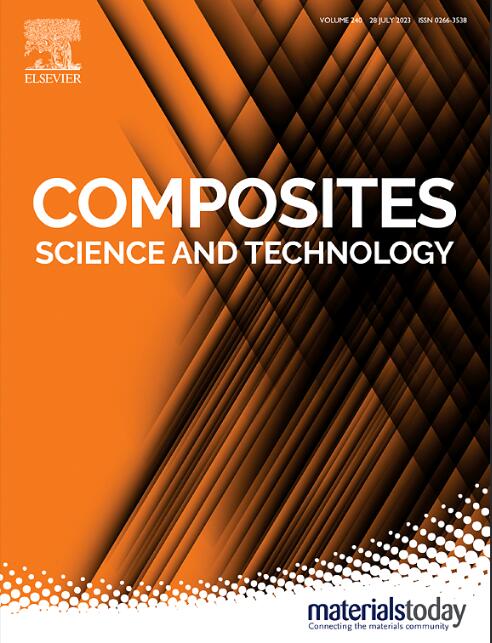等空隙深度连续纤维增强结构弯曲层熔融沉积建模路径规划
IF 9.8
1区 材料科学
Q1 MATERIALS SCIENCE, COMPOSITES
引用次数: 0
摘要
目前,连续纤维增强复合材料(CFRCs)的增材制造主要采用平面纤维布局。多轴增材制造系统的发展为非平面纤维布局复合材料结构的制造提供了前所未有的机遇。本文探索了一种CFRCs的多轴弯曲层熔融沉积建模(CLFDM)工艺。基于鼓形沉积截面,构造了满足均匀重叠的等空隙深度弯曲层理论沉积模型。基于理论沉积模型,提出了一种连续光纤弯曲层的路径规划方法。在曲面法曲率和曲线曲率变化的情况下进行精确的等误差步长计算,实现无干扰、等误差的打印路径离散化。采用集成双喷嘴打印系统的六轴机器人,通过其多自由度实现连续光纤CLFDM。通过计算机仿真和物理打印实验验证,本文算法对各种表面形状具有相当的可行性,有效地实现了高纤维体积分数连续纤维弯曲层的制造。力学试验对比结果表明,均匀重叠连续纤维弯曲层的破坏载荷分别提高了39.8%和89.2%,刚度分别提高了47.8%和73.2%。这为探索具有复杂弯曲纤维布局的复合材料提供了新的见解。本文章由计算机程序翻译,如有差异,请以英文原文为准。

Path planning for curved layer fused deposition modeling of continuous fiber reinforced structures with iso-void depth
At present, additive manufacturing of continuous fiber-reinforced composites (CFRCs) mainly adopts planar fiber layout. The development of multi-axis additive manufacturing systems provides unprecedented opportunities for the fabrication of composite structures with non-planar fiber layouts. This paper explores a multi-axis curved layer fused deposition modeling (CLFDM) process for CFRCs. Based on the drum-shaped deposition cross-section, a curved layer theoretical deposition model with equal void depth that satisfies uniform overlap is constructed. A path planning method for continuous fiber curved layer is proposed based on the theoretical deposition model. The accurate equal error step size calculation is performed under the change of the surface normal curvature and the curve curvature, achieving interference-free and equal error printing path discretization. Using 6-axis robot integrated with a dual-nozzle printing system, continuous fiber CLFDM is realized through its multiple degrees of freedom. Verified by computer simulation and physical printing experiments, the algorithm in this paper has considerable feasibility for various surface shapes, effectively enabling the manufacturing of continuous fiber curved layers with high fiber volume fraction. Comparative results of mechanical experiments show that the failure loads of the uniformly overlapped continuous fiber curved layers increased by 39.8 % and 89.2 %, and the stiffness increased by 47.8 % and 73.2 %, respectively. This provides new insights for the exploration of composite materials with complex curved fiber layouts.
求助全文
通过发布文献求助,成功后即可免费获取论文全文。
去求助
来源期刊

Composites Science and Technology
工程技术-材料科学:复合
CiteScore
16.20
自引率
9.90%
发文量
611
审稿时长
33 days
期刊介绍:
Composites Science and Technology publishes refereed original articles on the fundamental and applied science of engineering composites. The focus of this journal is on polymeric matrix composites with reinforcements/fillers ranging from nano- to macro-scale. CSTE encourages manuscripts reporting unique, innovative contributions to the physics, chemistry, materials science and applied mechanics aspects of advanced composites.
Besides traditional fiber reinforced composites, novel composites with significant potential for engineering applications are encouraged.
 求助内容:
求助内容: 应助结果提醒方式:
应助结果提醒方式:


